Podcast: Play in new window | Download
Show Notes
In this episode we talk about how to deal with disease problems in your landscape. Are the plants in your yard healthy? Do your garden plants need help? Is your lawn diseased?
Topics:
- Types of plant disease
- Mold, bacteria, protozoa, insect, etc.
- Diseases and pests are indicators of deeper issues
- Moles – excess grubs
- Grubs – excess root zone death
- Plant stress
- Moles – excess grubs
- Usual root cause – soil health
- Investigating in disease cause
- Research
- Preferred plant conditions
- USDA zone
- Existing soil conditions
- type
- Fertility
- pH
- compaction
- depth
- Water
- Frequency
- Quantity
- Drainage
- Sun exposure
- Planting depth
- Root expansion space
- Wind exposure
- Allelopathic plants?
- Walnut, oak, hackberry, grass, etc.
- What is your current chemical use?
- Is there a mismatch in desired vs. existing conditions
- Can issue be easily corrected?
- Can you fix soil health and life?
- Compost
- Mulch
- Nutrients
- Garrett juice, Compost tea
- Some amendments that boost life:
- Greensand, kelp, molasses, mycorrhizae
- Sometimes complete mismatch bet. Desired & existing
- Accept diseased condition or replace
- Continued treatment
- What plant can meet aesthetic desire and fit space conditions
- Research
Links for today’s episode:
- Garrett Juice
- Missouri Botanical Garden
- Launch Party!
- How to save 27 hours of work
- Consult with Ben
- Paul Tukey
- Rolling River Nursery
I’m Ben Hale your virtual design guide
to help you and your family have a
healthy beautiful landscape with less
work what’s up and welcome to episode 8
of the aesthetic ecosystems podcast
that’s right guys we’re creeping up on
double digits here with the podcast I’m
so glad you’re here today to tune in for
another show if you haven’t listened the
previous shows of course I highly
recommend you go check them out I mean
what’s not to miss right so today we’re
gonna be talking about disease and pest
problems and more importantly what they
mean what’s the underlying cause for
these issues and and that’s really the
key that we’re gonna be talking about
today we’re gonna be going deep getting
our an Inspector Gadget hat on today and
really trying to understand what are the
causes are the root causes of your
issues that you’re having with your
plants in your landscape and this is
everything from your trees to the grass
beneath your feet to the plants in your
garden bed and even as as much to say as
about your your vegetable garden if you
have a vegetable garden this the same
process applies there too so definitely
stick around today it’s gonna be a great
show and before that I just want to
thank you for listening thank you for
tuning in I’m really having a great time
recording these first eight episodes
here and I hope you really feel like
they’re jam-packed full of information
that’s helpful for you in changing your
life through your landscape and and I
want to hear your feedback so definitely
if you have any comments go on over to
the show notes today’s episode you can
go to aesthetic ecosystems calm slash
episode eight and you will get the page
for this episode and leave your comments
there and in any show in the future the
same thing you go to aesthetic
ecosystems calm slash episode followed
by the number
the episode and that’ll take you right
to that episode that you’re listening to
and leave a comment I keep a close watch
on those comments to see what’s coming
in and to hear your feedback and I want
to hear your feedback I want to get this
show custom tailored to to fit what you
want to hear and and I’d love to talk
about the topics that you’re dealing
with right now in your landscape if
you’re listening to this as I’m
recording it or soon after it’s still
late winter and so there’s not a whole
lot going on in the landscape this is
the perfect time to be planning for your
your growth season the upcoming year if
you’re from the south your plants might
already be booming or they might not
even slow down over the colder months
here especially if you’re in say
southern Florida or something and or you
know throughout the world so definitely
leave your comments I’d love to hear
your feedback let me know what you want
to hear let me know what you’re thinking
about the shows so far and and I want to
have an open year to to what you’re
thinking and and likewise your reviews
on iTunes and stitcher and other feeds
are really helpful for me reaching other
people and helping get our message
across so if you haven’t done so already
go on over to iTunes or whatever and and
leave her a thoughtful review let it let
us know let everybody know what you
think about this show and and how you
feel about it so far so let’s get into
it today disease and pest problems and
what they mean that’s the most important
pieces what they really mean there’s
tons of ways to fix disease problems
already out there I’m sure you’re aware
of if you have if you have grubs there’s
a way to fix that right and there’s a
thing you can go get grub removers for
your landscape if you’re having a fits
you had you can go get a spray for that
and there’s all sorts of custom tailored
tools that there’s a ton of research
that goes into these things and and to
how to eradicate them from your
landscape there’s also organic methods
if you’re a more into more the healthy
methods of removing things or the
organic doesn’t always mean healthy I
want to just make that clear but if you
if you’re trying to do something that
maybe is either healthier for you and
your family
generally speaking organic is is the way
to go and and there there are plenty of
ways to solve some of these problems
there too but the the key here is that
if you just work on the specific problem
at hand you might not be fixing the
underlying the true problem and and
that’s what we’re gonna get into today
so when you’re talking about different
types of plant disease or conditions
problems generally speaking they fall
into these categories they’re mold
problems bacteria problems so you’re you
microorganisms protozoa also fit into
that category sometimes you have like a
warm problem nematodes or something
similar they might be an insect or
crustacean problem so it might be
certain microcode situations there’s
very it’s crazy how what the vast array
of organisms when you start to get to
the microscopic level even just the
amount of diversity there is
mind-blowing so anyway I’m fascinated
with with microbiology I have actually
here’s a fun fact for you guys I have a
background I have a degree in
microbiology so it’s a perfect segue
into into this landscape area of healthy
landscapes because healthy soil is full
of life and unhealthy soil generally is
is not full of life and and that totally
builds into plant health so so healthy
plants usually need healthy soil and to
have healthy soil you need a healthy
array of microorganisms and that’s right
up my alley so anyway enough about me
getting back on track here so again we
have different causes of these diseases
so you have mold bacteria protozoa
insects you may even have disease plants
that are just because they’re not in
such a healthy condition they’re more
prone to pressure from browsing animals
and such as well that’s not always the
case you know sometimes browsing animals
just look for the the most nutritious
plants and landscape as well but in
general you’re talking about these
little guys these little organisms that
sometimes get out of whack in car
problems and the one thing I’m gonna
make abundantly clear here that’s not
generally talked about is you have more
good organisms than you have bad
organisms so this is all about balance
and when this gets out of balance is
when you start to have a disease issue
so if you can keep a good balance of the
healthy organisms in your landscape then
you’re you’re going to have less fewer
problems of this sort and we could talk
for hours and upon hours and still not
cover this full subject of how to have
healthy balance of organisms and the
truth is that this is a relatively new
era and there’s not a whole lot that’s
known about it how to support this
healthy ecosystem and keep it in balance
and how to monitor it well without just
waiting until disease issues arrive but
what at the point I want to make here is
that some of these quick solutions they
disturb the healthy balance or the
healthy beneficial organisms as well and
so while you might be treating the
specific problem you might be hurting
things long-term more so than you think
by killing other organisms that help
recreate a balance a kind of a similar
example to this is I gave the example a
while back of a fadap reavie acepted
problem and you spray you might also be
killing the predators of the aphids at
the same time so you’re going to have
the aphids bounce back there inevitably
there’s going to be a few that survive
or some eggs somewhere that hatch out or
there’s going to be a fits coming in
from off site from another location
maybe your neighbors landscape and
they’re going to continue to cause that
same problem and so you have to continue
to treat for it and unfortunately
treating for a lot of these organisms
they’re not very well targeted and
you’re going to have issues of your
predator insects that might prey on the
aphids such as lace wings and ladybugs
those are very very important insects to
have in your landscape because they keep
it and maintain a healthy balance and
they grow slower they reproduce more
slowly and so unfortunately you disrupt
the whole lifecycle of your predators
and your prey inside
the problem in sex will be the ones that
continue to come back the example I was
going to give from a medical standpoint
to is is antibiotics so we’ve used
antibiotics pretty perfuse ly over the
past say a hundred years and in that
time we’ve now started to discover that
by taking especially oral antibiotics
that go throughout your whole body and
your whole bloodstream that
they disrupt normal cycles and there’s
infections that occur only after
antibiotic treatment usually that can be
very severe just because you took care
of one problem and it causes another
okay now diseases in general the point I
want to make here is that they’re
indicators of deeper issues they’re
usually an indicator of plant stress and
the key for this episode is to figure
out what is the root cause of the plant
stress what’s the underlying issue of
the plant stress and if we figure that
out and make the plant comfortable and
happy most likely to the disease
condition will go away an example here
is say you have a mole problem that’s
pretty common my neighbor has a mole
problem right now and I was chatting
with him about it and most often what
people do is they try to trap the mole
kill the moles or use chemicals even to
kill the moles or drive them away from
their landscape and especially if you’re
using the chemicals these definitely
have a more widespread effect than just
killing moles specifically so it’s just
something to exercise caution with and
yes they can’t take care of the mole
problem but most likely the moles are
going to come back because you haven’t
taken care of the root cause a lot of
times moles come around because there’s
grubs in your landscape and so people
hate the grubs right they eat the the
roots of your grass or whatever and they
want to get rid of them when and
rightfully so they can cause a lot of
problems but usually the reason that you
have excess grubs in your landscape is
when you have weakened grass plants and
especially with excess root
death death so if your plants your grass
plants are stressed to the point where
the roots aren’t surviving in a healthy
manner and a lot of times this is due to
excess fertilizer you swear there’s a
burst of growth there the grass blades
are being cut real short the roots are
stressed because they can’t support the
growth and then the excess chopping of
the grass blades and so the the grass
play plant goes into a stress mode and
that’s when they attract things like the
excess grubs in your landscape so by
taking care of the the health of your
grass in a more holistic manner you make
the grass plants more robust they become
less appealing and less accessible to
the grubs which then the moles leave and
go somewhere else because there’s fewer
grubs it’s a more long-term solution but
it gives you the right solution in the
long run as well you have to spend less
money and less time treating your your
lawn to remove the grubs and the moles
so that’s an example of how we kind of
investigate and diagnose some of these
really underlying problems and and what
really is the cause as opposed to maybe
the surface thing of oh it’s just I have
moles in my landscape so when it comes
to plant issues 90% of the time I would
say don’t quote me on that
statistic because 98% of statistics are
not statistically relevant or some some
joke like that right I would say 90% of
the time if you fix your soil health
you’re going to fix the plant health
issue because trying to maintain a good
fertile healthy soil will inevitably
build your soil life which makes your
plant happier makes it stronger and a
lot of times takes care of the issue
even if it’s a nonspecific adjustment
you’re making to your soil and fertility
so just something to think about there
if you say say you have to turn off this
episode right now and you have to run
out in your landscape and fix the plant
problem and you can’t come back to the
episode anymore and can’t listen
anything else the key takeaway
give you is fix your soil health okay so
let’s put on our investigator hat and
try and get into some of these clues
that might lead us to where the problem
is coming from so first we’re gonna need
to do a little bit of research and this
research will help us understand more
about your plant that you’re having a
problem with more about your landscape
in specific the specific site your plant
is located and then just some of the
conditions in general so first what are
the preferred plant growth conditions in
an ideal situation for your plant you
can usually find this stuff with a quick
google search and if you just type the
plant whatever plant you have type in
its common name you’ll find the
scientific name use the scientific name
to look for more details on its growth
conditions so so let’s say it’s an oak
tree right maybe you have a white oak so
you search white oak and most likely
you’ll get a Wikipedia result you might
get some other results as well and that
will tell you the the scientific name so
for white oak its Quercus Alba and so
then you type in you copy that name type
it into your search bargin Quercus Alba
growing conditions or something like
that you might not even need to type
that you might just type the species
name genus and species the scientific
name and you’ll come up with a bunch of
resources for one where to buy these
plants but more importantly some
resources that tell you the growing
conditions one resource that I really
enjoy especially for those people that
live in the eastern and Midwestern us
throughout the Great Plains states is
the Missouri Botanical Garden website
they have a huge database of plants and
the preferred growing conditions for
these plants so it goes through it tells
you all sorts of things that the plant
likes what types of soil they grow in
what type of light it prefers what type
of moisture conditions and and all sorts
of things all sorts of things like that
that are very helpful and things you
need to know before moving forward so
once you get these preferred plant
conditions now it’s time to look at your
landscape at this
site where your your plant is planted as
well as just your general living area so
for your general living area find out
your USDA hardiness zone so this will
tell you basically how cold your
landscape gets 90% of the time in the
winter and so what’s the lowest
temperature that you get in your climate
this is helpful because if the plant is
unable to survive that condition or it
becomes stress through that the
condition that can be a major problem
what are your existing soil conditions
this is where you need to get into your
specific location of your plant so what
once your soil type if you haven’t had a
soil test done this is a very important
time to do it it’ll it might lead you to
an answer so what’s your soil type
what’s the fertility level of your soil
what’s the pH of your soil how compacted
is your soil and what’s the depth of
your topsoil so how far down until you
hit your kind of your subsoil which is
like your clay or your sand or what have
you
beyond the soil piece
what’s your water availability so what’s
the frequency of watering if you’re
irrigating it for one or what’s the
rainfall frequency what’s the quantity
of water you get throughout the year and
throughout certain seasons if you see
stress during a certain time of year and
what’s the drainage of this specific
site that you’re talking about so does
the site drain well just water pool up
there how often does this happen either
way do you have erosion there that’s
occurring so these are very important
things to consider
what’s the sun exposure how much Sun
does it get what time of year and is Sun
reflecting off of something if it’s you
know by the wall of your house and you
have strong afternoons so I’m hitting
the wall of your house and the plants
right next to it that could be causing
plant stress if the plants not adapted
to that condition or alternatively maybe
you it’s in a shady spot so during a
certain time of year that it can’t have
too much shade what about planting depth
especially for shrubs and trees it’s
very
that the when translated into your
landscape that the plant isn’t placed
too deeply in the landscape where
there’s soil touching part of the the
area that should be the trunk this can
cause some major issues let’s see what’s
next
okay the space for route expansion so
how how much space does do the roots
have to grow this is depth as well as
width are they being crowded by
something maybe it’s a physical
structure like concrete or maybe it’s
some bedrock or you could be talking
about other plants that may be crowding
the roots as well so something to
consider there and wind exposure how
much wind is the plant receiving is it
excessive amounts of wind or maybe that
could cause excessive evaporation or
heat stress or cold stress in the winter
okay so those are a lot of things to
consider but those are all very
important things to diagnose the issues
so before we move on to using some of
this stuff also look around is the plant
growing something growing next to
something that’s a little of Pathak and
what I mean by this this is a term that
means is it growing next to a plant that
secretes chemicals in the soil that
prevent its its ability to thrive so I
have two examples of this actually in
our landscape and where this is is
certainly occurring one is a we have a
type of sunflower that we have planted
in our back yard toward the back I kind
of put it in this you know the corner
where it can just purl if rate and grow
perfuse Lee was my hope and kind of fill
the space and provide some really fun
late summer beauty well it turns out
that I planted this this is it’s a type
of sunflower called a Jerusalem
artichoke or a sunchoke and they I
planted them right underneath these
hackberry trees well it turns out that
these plants do not thrive under the
hackberry trees because the leaves of
the hackberry tree when they draw
in the fall they secrete tannins so kind
of an acidic type of chemical into the
soil and over years they will actually
adjust the soil to where there’s certain
secretions in the soil itself not just
the tannins but other chemicals as well
I can’t remember specifically what the
chemical is from hackberries but it
prevents certain plants from being able
to grow and certainly these sunflowers
so they’ve actually really struggled to
take off and thrive like they’re
supposed to another example is grass
actually so a lot of trees struggle when
they’re planted right in the middle of a
bunch of grass because grass secretes
chemicals that prevent the the ability
of certain trees to grow and it’s a way
for grassland prairies to maintain its
Prairie like space so some examples of
these allelopathy plants so I already
mentioned hackberries grass also common
ones are walnuts or something in the
walnut family like butternut trees and
Oaks as well can even have a little
Pathak product properties even maple
trees can secrete chemicals so it’s just
something to consider what are the
plants growing around your specific
problem plant and again use Google as
your friend your investigator tool to
search if those plants so type in your
plant as well as some of the plants
around it one by one and see if they’re
incompatible okay next what is your
current chemical use so are you using
any chemicals on your site that may
affect your plant the most common
problem here is when people spray their
yard for a seiya a broadleaf treatment
no weed and feed treatment on their lawn
and they’ll spray it right above the
root zone of trees and these a lot of
these weed and feed treatments they kill
any plant that is not a blade type plant
like
grass and so any broadleaf plant like
clover or like dandelion will be killed
by this chemical and likewise your trees
so your trees are considered a broadleaf
plant as well or your shrubs and so if
you’re getting this this chemical to
where it seeps into the roots of your
tree it will cause disease problems and
stress problems in your tree and you
might even kill it this is very common I
see it especially in commercial
landscapes as well where where I see the
the area that should be a kind of a
mulch circle it gets weeds and so a
landscape maintenance people will spray
that area for weeds and it kills the
tree and so if you’re using chemicals
improperly where where they’ll affect
the plant that’s having problems that if
you stop the use of that chemical soon
enough you might get a healthier plant
alright we’ve got tons of information
now we’ve got information about what
makes our plant happy what’s its ideal
situation we’ve got information about
your specific space and we’ve asked a
lot of questions about the habits and
practices that you’ve made in your
landscape that might positively or
negatively in fact affect your plants so
what can we do with all this information
let’s ask a few questions here that
might help drill down into what the
specific issues are the first and most
obvious thing to do is you’ve got all
these existing conditions of your
specific garden location and you’ve got
the the desired conditions of your plant
check and see if there’s a mismatch if
you’re planting a plant that doesn’t
grow in the right pH and in say say you
forgive you this example in previous
episodes as well we have blueberry
plants they prefer pretty acidic
conditions I planted them in our front
garden which is basic by nature so the
bedrock is limestone it provides a
fairly basic clay subsoil and usually
the topsoil is basic as well we planted
it in a space where there were
previously some evergreen bushes and
evergreens tend to acidify soil so I
assumed without doing any soil testing
that the blueberries would thrive there
well as it turns out they’re really
struggling because unfortunately the the
subsoil in our area is so dominantly
basic that it quickly out over influence
the the acidic nature of the previous
evergreen plants so if there’s an
incompatibility like that that the plant
just cannot adapt to that could be your
issue that could be what’s weakening
your plant or causing it to have stress
with growth and that can be very
important similarly if your plant
doesn’t do well in compacted soil
conditions and it requires loose soil
that could it be an indicator as well a
lot of developed areas like your your
subdivisions they as they’re constructed
the soil becomes very compacted and low
in nutrients and so this is a very
common condition with with landscape
plants okay so do that exercise check if
there’s a mismatch between desired and
existing conditions and then ask
yourself can this issue be easily
corrected sometimes it can and and if if
it can’t you’re in luck
it might require ongoing maintenance to
correct but if you really want to save
this planter you really like this plant
for a certain reason it might be worth
the effort even though it might cause
extra work so if that’s the case you’re
in luck or maybe it’s an issue you can
correct without having to provide long
term maintenance which is even more
ideal the next can you fix the soil
health in life sometimes by just
building the soil and like I said
earlier in the episode a lot of times if
you just fix the soil health then you’ll
end up with better plant health for most
plants and so you can do this through
composting and in compost you don’t want
to add too much and you don’t want to
add it in depth you want to add it as a
top dressing to your garden beds usually
small layers at a time
so 1/4 to 1/2 inch at a time if you want
to do more I would suggest mixing it
with topsoil so you’re not overly
concentrating the area with sometimes
some pretty strong conditions and you
might also end up with a lot of leaching
if you add too much so compost mulching
as well is very important it it provides
a more natural basis to your garden beds
if you’re using the right mulches so
you’re allowing ongoing decomposition
some nurturing active soil life you’re
insulating your soil so mulch is very
important and there’s certain nutrients
or additions you can add as well
especially if you get a soil test and
they come back with some recommendations
but again if you’re talking about NPK
levels or whatever just be careful with
using synthesized ones because they’re
highly concentrated they leach out
quickly and they cause they usually
cause too much of a boost at once and
then it’s lost and it causes kind of a
dependency and its own problems as well
so if you’re looking at nutrients
consider more natural options maybe
where things are naturally available in
lower doses that release over time you
can also consider more kind of
concentrated amendments that are liquid
form so two that come to mind that they
aren’t readily available always but you
can check form or make them yourself
the first is Garrett juice so this is a
product that’s promoted by Howard
Garrett of the dirt doctor show down in
Texas and he actually provides a pretty
good amendment that that is really good
at boosting soil life so you can you can
check if you just search for Garrett
juice you’ll find it it’s GA RR e TT I
believe is how you spell his last name
and if you search for that he sells it
as well as you can it gives away the
recipe freely if you want to make it
yourself
similarly compost tea so if you can find
a good healthy compost tea these aren’t
generally very shelf stable because it’s
it’s a product that’s teeming with with
beneficial organisms for your soil but
it can be used as a foliar spray or as a
soil spray and really change things
around quickly so something to consider
they’re more of a organic gardening type
product but they’re very helpful in the
boosting your soil health so something
to consider if that’s what you want to
do other types of amendments you can
consider our green sand so these are
this is a type of clay that’s mined from
old old marine ocean sediment and so
it’s full of a lot of different minerals
a lot of trace minerals it also is good
at absorbing water and retaining it in
your your soil and it also is a
slow-release of I believe it’s potassium
so it’s a good amendment I don’t use any
of these amendments without first
knowing what you’re doing with them so I
recommend you research each of these
kelp as well as uses a good amendment to
boost some of the organic matter that’s
available in your soil you can also use
molasses is kind of a sugar boost to
some of the organisms there if you have
a little bit present already I usually
suggest that in combination with some of
these other amendments and also becoming
a lot more popular as mycorrhizal fungi
so inoculating your soil with these
fungi that are able to grow in tandem
with plants to help boost the plant
health as well as the fungal health with
good healthy fungi so these are just
some examples of amendments we’ll get
into a lot more into amendments in the
future with with more in-depth shows
about it and what each type of amendment
can do and when a certain one is
important and when one’s not but again
overall here I recommend they’re used
more as a a nurturing thing to a tool to
build the health of your landscape so
you don’t have to maintain it and keep
adding stuff in the future so that’s
kind of what these things that’s what
the goal of these things should be so
they’re not just something to kind of
use lackadaisically or or willy-nilly or
whatever the term you want to use is
there they’re used for a specific
purpose and so I suggest you research
what they do before just going out and
using them okay so we’ve talked about
how we can fix our soil health sometimes
unfortunately there’s just a complete
mismatch between the desired plant
conditions and the existing conditions
of your location and if that’s the case
there are a couple things you can do
here
one is you can choose to accept the
disease condition as is if you really
want this plant you want to save it for
some reason and you don’t want to wait
for a new plant to take its place you
may just have to either accept the
condition or replace it with something
you can choose to replace it and or
another option is to find out what you
can do to fix the plant condition
without solving the underlying problem
and this often requires continued
treatment so if you really want the
plant and you may just need to
continually treat it to solve the the
outward problem without fixing what the
core issue is so if you do want to
replace the plant you just you decide to
go with that process that that
corrective action which unfortunately
sometimes you have to do if it’s an
incompatible plant like the the
sunflowers in our backyard
either the sunflowers or the hackberry
trees have to go and most likely it’ll
be the sunflowers because the hackberry
trees they’re 30 years old and I don’t
want to remove a mature tree just for
some sunflowers likewise the blueberries
they’ll probably have to get moved
because they’re not going to thrive in
that can that location unless I continue
to amend the soil every couple season so
when you’re looking for a replacement
plant think about what plant can meet
the aesthetic desire and fit the space
conditions and and again you kind of go
through the same aggressive process so
what are my current conditions and then
you work backward to say to see what
plants are able to grow in that
condition and that’s the the fun piece
where you start
really get to look at some different
options and make a great choice to to
fit your new landscape space so that’s
it for today guys we’re we’re done with
our investigation I hope this is giving
you some direction on what to do with
your plants that are having problems in
your landscape and I really hope it
moves your landscape into a positive
direction where you can you can have the
beauty that you want without taking tons
of time to maintain your landscape and
that’s what it’s all about you guys and
the way we do that is through plant
health and keeping you healthy at the
same time so I hope you enjoyed this
episode and if you’re not really sure
where to start you know if this may
sound overwhelming or you just want to
get moving now I have two things for you
first to make a change right now in
saving time too without any expense on
your part I suggest you go over to
ascetic ecosystems calm twenty seven
hours that’s two seven hours and and
check out the resource I have there
there’s a free guide I have on how to
save twenty seven hours just through
simple habit changes in your landscape
it’ll give you back a ton of time this
season and and I hope you can use that
time to make a positive difference in
your life and if you want to go deeper
if you need some help with what you’re
working on head on over to aesthetic
ecosystems comm slash consulting and
look at the options there I have
available for direct one-on-one
consulting through virtual consultation
and I can help you with your issues you
might be having I can help you with
setting goals for your landscape and how
to save time and we can we can work more
deeply on on how to do that okay now
it’s time to talk about the launch party
guys excuse me not party but partay
the launch party is for the first two
months of the show from March 11th
through May 11th 2018 I want to have
some fun to help spread the word spread
the word about the show I really
appreciate your enthusiasm and interest
in this show and I want to get you guys
involved and have some fun while we’re
doing it so this is a chance to have
some fun too for us to get connected to
win some prizes and let’s talk about the
prizes before we talk about what we’re
doing so
what are the prizes weekly I am offering
a free consultation with me Ben Hale
which is normally a $99 value so one
person each week that gets involved in
the launch partay gets a free
consultation I’m also giving away a free
offer for one of my ebooks ten ways to
get more beauty with less work which is
a $19
next the grand prize there is only one
of these we’re giving away through this
whole launch party so at the end of the
launch partay the organic lawn care
manual by Paul Tookie
so Paul Tookie himself has offered to
give away one free book to a lucky
winner that’s getting involved in this
launch party and this book is all about
how to manage a healthy lawn from
anything from a golf course style lawn
to your low maintenance lawn which of
course is something I prefer here on
this show right I own this book I’ve
read this book multiple times I’ve given
it away it’s a kind of a tattered and
worn version that I have and I use some
of these practices in my own lines so I
love this book and I highly promoted as
well and you’ll hear me talk about it
throughout the show but Paul Tookie has
been kind enough to offer a copy of his
book as a grand prize and there’s also a
special surprise for everybody that’s
going to be getting involved in the
launch partay the rolling river nursery
out of California has offered a special
surprise for everybody that’s involved
the rolling river nursery is a USDA
certified organic nursery so I went
online and I looked around for nurseries
that have online availability ship
through the continental US and have some
great offerings and rolling River
nursery is being kind enough to become
involved with our launch party and
they’re not only are they online
availability but they also are certified
organic which means they don’t use any
harmful herbicides or pesticides that
you have to be concerned with your
family about and so what you’re getting
is a safe and healthy plant they also
offer a ton of edible plants and trees
and shrubs cacti and succulents so they
offer several trees and shrubs that are
adaptable throughout the most of the
United States so Deb
worth checking them out and in addition
these guys are also involved with a
non-profit in Southern California to
help local food movements called
planting justice org so if you want to
learn more about them you can go to
rolling River nursery comm and I also
want to give a shout out to Paul to Kies
website for his organic lawn care manual
and his other works is Paul to keep calm
PA UL t uke Y and to sum up guys okay
you want to learn how to get involved
with this launch party go over to
aesthetic ecosystems comm slash pod
launch and that’s P o dl au n CH there’s
a link in the show notes and that’s
that’s gonna give you all the
instructions on how to get involved
there’s two ways specifically to get
involved one is through sharing with
your peeps on Facebook and the other is
through leaving a review on iTunes
both of these are gonna help spread the
word about the show and get other people
other friends listening to it as well
and I sure appreciate your help here and
likewise this is gonna be a fun time so
so gone over and to aesthetic ecosystems
comm slash pod launch to get involved
check out the show notes for any links I
mentioned today we’ve talked about
saving 27 hours in your landscape and
I’ll try and leave a link there as well
to Missouri Botanical Garden that I
mentioned earlier and before you head
out I see I want you to head on over to
your app that you’re listening on or
your computer or whatever and subscribe
subscribing we’ll make sure you get the
future episodes delivered right to you
and ready to go so you can listen to
them on a timely basis and and make sure
you go over to iTunes or stitcher or or
your favorite listening app and leave a
review and so we can get to reach more
people through this podcast and make a
positive difference and everybody’s
lives that’s listening
and before you go I just want to say
thanks for tuning in and make sure you
live with passion you make tomorrow
better than today
[Music]



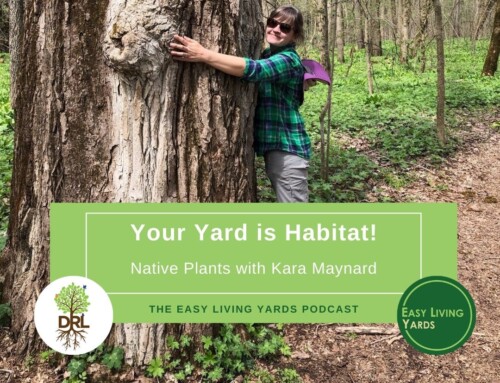
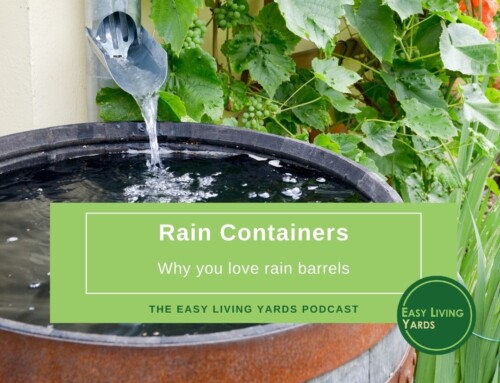
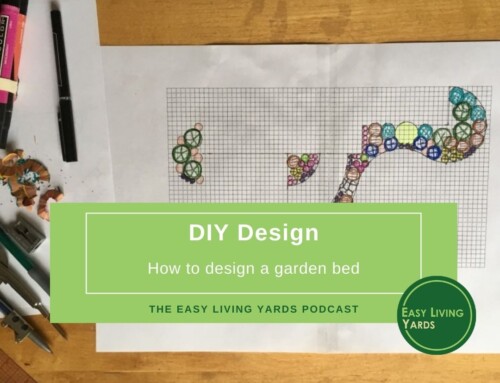

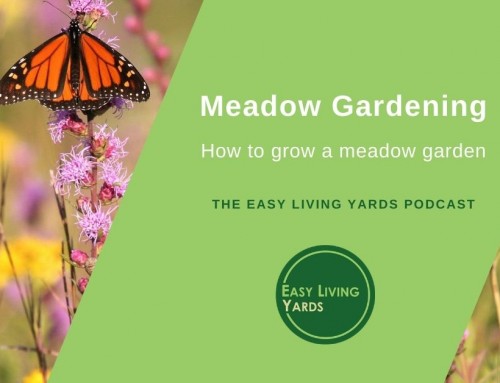
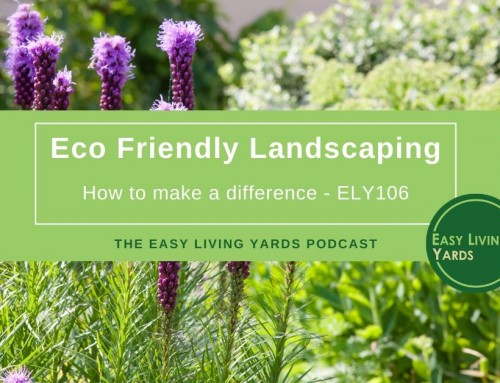
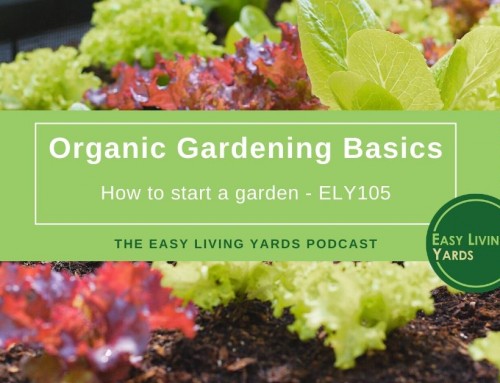
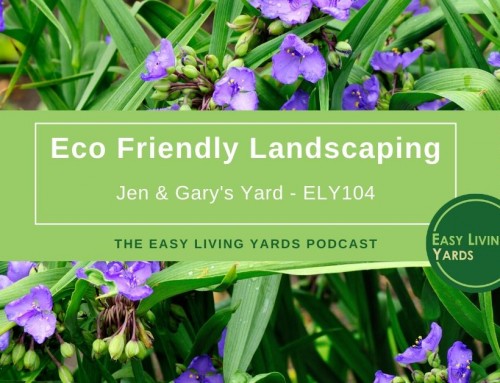

Leave A Comment